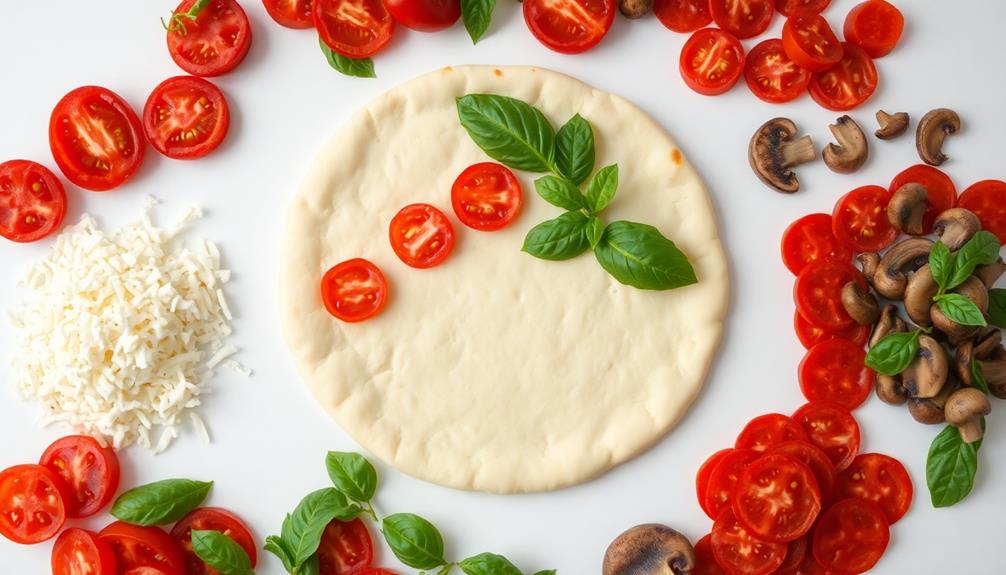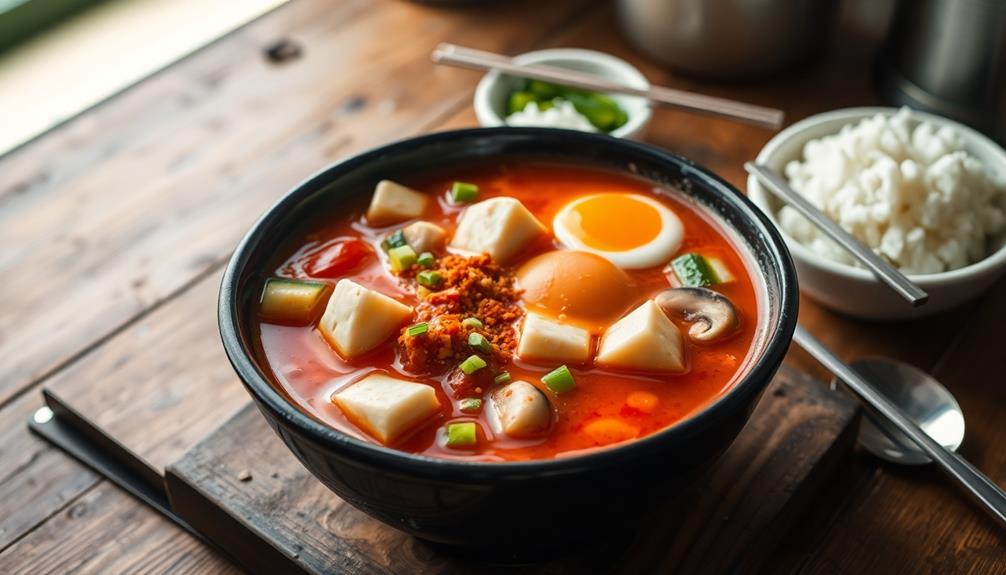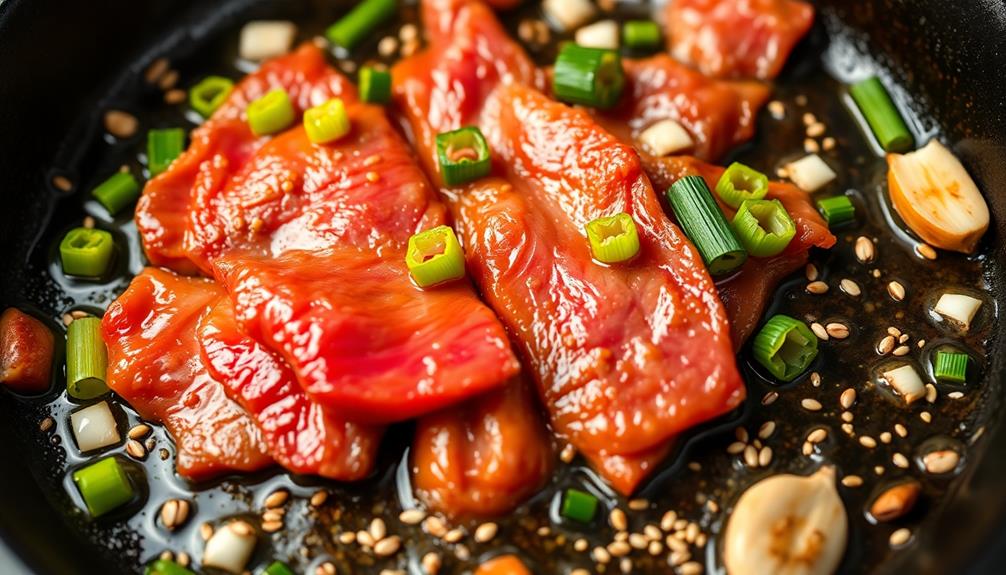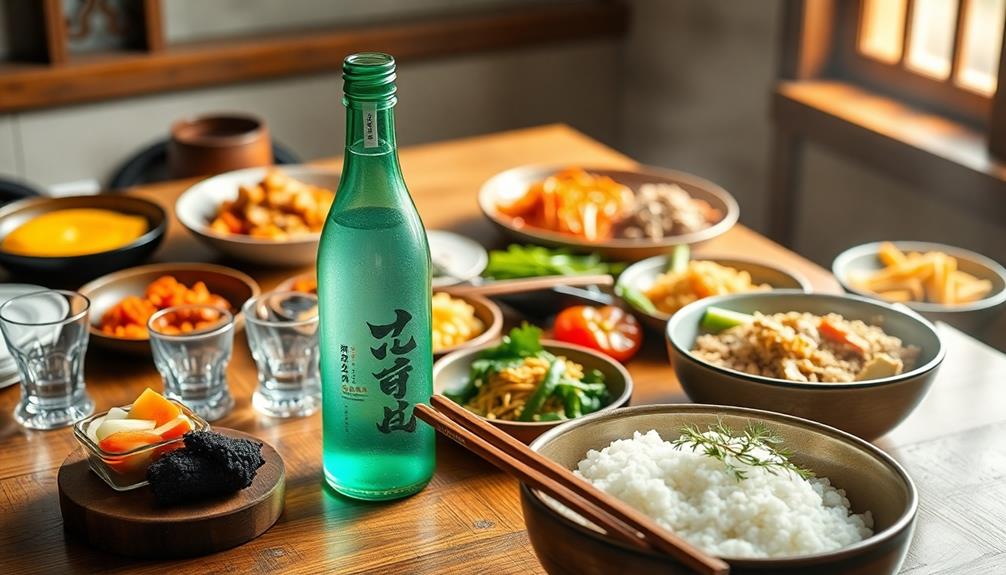Patbingsu is a super tasty Korean shaved ice dessert that'll cool you down on a hot day! It's made with fluffy, snow-like ice topped with sweet red beans, fresh fruits like strawberries and bananas, and a drizzle of creamy condensed milk. You can even add fun toppings like mochi, nuts, or syrup for extra flavor. The best part? Patbingsu is often shared with friends and family, making it a hit at celebrations! So, grab a big bowl and start mixing your favorite ingredients together. Trust me, you're gonna want to know more about making this delightful dessert! Looking for another delicious Korean dessert to try? You might also want to check out the kongguksu recipe, a chilled noodle soup made with soy milk and served with fresh toppings like cucumbers and sesame seeds. It’s a perfect option for those looking for a refreshing and savory treat on a hot day. Just like patbingsu, kongguksu is a popular choice for sharing with friends and family, so gather your loved ones and enjoy this delightful dish together!
Key Takeaways
- Patbingsu originated in Korea during the Joseon Dynasty, evolving from crushed ice topped with sweet red beans to a globally enjoyed dessert.
- The dessert is traditionally enjoyed during hot weather and is known for its mix of textures and flavors in Korean cuisine.
- Common toppings include sweetened red bean paste, fresh fruits, condensed milk, and optional additions like mochi and ice cream.
- Preparation involves shaving ice, layering toppings, and customizing sweetness with syrups, making it a fun, shareable dessert experience.
- Patbingsu is increasingly popular in cafes and restaurants worldwide, with regional variations showcasing local ingredients and preferences.
History
Have you ever wondered where patbingsu came from? This delightful dessert has a rich history that traces back to Korea. It's believed that patbingsu began during the Joseon Dynasty, around the 19th century. Back then, people would enjoy crushed ice topped with sweet red beans, fruit, and various other toppings. Can you imagine how refreshing that must've been on a hot summer day?
As time went on, patbingsu evolved and became even more popular. Street vendors started selling it, and it quickly became a favorite treat for children and adults alike.
In the 20th century, the dessert saw a major transformation when milk and flavored syrups were added, creating the colorful and creamy version we love today.
Now, you can find patbingsu in many places, both in Korea and around the world. It's often served in big bowls, perfect for sharing with friends!
You might even find unique flavors and toppings, like matcha or fruit syrups, making each bowl a new adventure. So, next time you enjoy patbingsu, you'll know you're savoring a dessert with a fascinating history and a fun twist!
Recipe
Patbingsu, a delightful Korean dessert, is a perfect way to cool down on a hot day. This shaved ice treat typically features a base of finely shaved ice, topped with a variety of sweet ingredients that range from red bean paste to fresh fruits, mochi, and condensed milk. The combination of textures and flavors makes patbingsu a favorite among both locals and visitors alike.
With its roots in traditional Korean cuisine, it has evolved into numerous variations, allowing for creativity and personalization.
Making patbingsu at home is easier than you might think. With just a few key ingredients, you can whip up a refreshing treat that rivals those found in your favorite dessert shop. Whether you prefer the classic version with sweetened red beans or a more modern take with fruits and syrups, the choice is yours.
Gather your ingredients and get ready to dive into the world of this satisfying summer dessert.
Ingredients:
- 2 cups of ice
- 1 cup of sweetened red bean paste (pat)
- 1 cup of diced fresh fruits (such as strawberries, mangoes, or bananas)
- 1/2 cup of condensed milk
- 1/4 cup of mochi pieces (optional)
- 1/4 cup of syrup (such as fruit syrup or honey)
- 1 tablespoon of powdered milk (optional)
- Toppings such as chopped nuts or chocolate syrup (optional)
To prepare patbingsu, start by finely shaving the ice using a blender or an ice shaver, creating a fluffy texture. In a bowl or a large serving dish, layer the shaved ice and then add a generous scoop of sweetened red bean paste in the center.
Top the ice with your chosen diced fruits, followed by a drizzle of condensed milk and syrup. If you're using mochi pieces, sprinkle them on top. You can also add powdered milk for extra creaminess and finish with any additional toppings like nuts or chocolate syrup to create a visually appealing and delicious dessert.
When making patbingsu, feel free to customize it to your taste. You can experiment with different fruits and syrups based on what's in season or what you enjoy most.
If you want to enhance the flavor, consider freezing some fruit juice into ice cubes and then shaving them for an extra fruity kick. Additionally, the texture of the ice is crucial—aim for a fine, fluffy consistency for the best experience.
Enjoy your homemade patbingsu with friends and family for a refreshing treat that's sure to impress!
Cooking Steps
Now that you've got your recipe, let's jump into the fun cooking steps to make your delicious Patbingsu!
First, you'll need to prepare the ice for shaving, which creates that perfect fluffy texture.
Then, you'll add sweetened condensed milk and top it with fresh fruit, making it look as tasty as it is!
Step 1. Prepare Ice for Shaving

To prepare ice for shaving, start by filling a large bowl or container with water and placing it in the freezer. You want to make sure the water's nice and deep, so your ice will be thick enough for shaving.
Now, be patient! It usually takes about 4 to 6 hours for the water to freeze solid, so maybe do some fun activities while you wait, like watching your favorite show or playing a game.
Once the water's frozen, take it out of the freezer. You might need to let it sit for a few minutes to soften a little, making it easier to remove from the container. Carefully run some warm water around the edges of the bowl, and you should be able to pop the ice out without any fuss.
If it's still stubborn, just give it a little more time!
Now, grab your trusty ice shaver or blender. When you shave the ice, try to get it nice and fluffy, almost like snow!
This fluffy ice will be the perfect base for your delicious patbingsu, ready to hold all those yummy toppings. Enjoy the process—it's going to be delicious!
Step 2. Add Sweetened Condensed Milk

The delightful creaminess of sweetened condensed milk elevates your patbingsu to a whole new level. You'll want to grab a can of this sweet treat and get ready to drizzle!
First, make sure your shaved ice is all set in a bowl, creating a fluffy mountain that's just begging for toppings.
Now, take that can of sweetened condensed milk and shake it a little to mix it up. Then, slowly pour the milk over your ice. Watch as it trickles down, making everything look even more delicious! You can use as much or as little as you like; some folks enjoy a heavy drizzle, while others prefer just a hint of sweetness.
If you're feeling adventurous, try swirling the milk into the ice instead of just pouring it. This way, every bite will have that creamy goodness mixed in! Just remember, the more condensed milk you add, the sweeter your patbingsu will become.
Once you've added your milk, step back and admire your masterpiece. You're almost ready to dig in! The combination of icy texture and creamy flavor is simply irresistible, so get excited for the next delicious step!
Step 3. Top With Fresh Fruit

After adding that luscious drizzle of sweetened condensed milk, it's time to elevate your patbingsu with some vibrant fresh fruit. You can really make your dessert pop with colors and flavors!
Start by choosing your favorite fruits. Strawberries, bananas, and kiwi are all fantastic options. Slice them up into bite-sized pieces, so they're easy to enjoy.
Once your fruits are ready, sprinkle them generously over the top of your shaved ice. Don't be shy; the more, the merrier! You can create fun patterns with your fruit pieces, making your patbingsu look as amazing as it tastes.
If you're feeling adventurous, try adding some extra toppings, like blueberries or mango chunks, to give even more flavor and texture.
You can even toss in some chewy rice cakes or sweet red beans for a delightful surprise!
Step 4. Drizzle With Fruit Syrup

Often, drizzling fruit syrup over your patbingsu adds a burst of sweetness that perfectly complements the icy treat.
To start, grab your favorite fruit syrup—strawberry, mango, or even green tea works wonders! If you've made your own syrup, even better!
Now, it's time to get creative. Hold the syrup bottle above your patbingsu and gently squeeze. Let the syrup flow like a sweet river over the fluffy ice, covering it just enough to make it look inviting.
You can zigzag it across the top or create a delightful pattern; it's all up to you!
Don't be shy; add as much or as little syrup as you like. Remember, the syrup isn't just for looks; it'll soak into the ice, making each spoonful a tasty surprise.
If you're feeling adventurous, try mixing different flavors together for a fun twist!
Once you've drizzled the syrup, take a step back and admire your masterpiece.
You've just added a delicious touch to your patbingsu, and now it's time to dig in and enjoy your creation.
Get ready for that sweet, icy goodness to melt in your mouth!
Step 5. Sprinkle With Roasted Nuts

To elevate your patbingsu, sprinkle it with roasted nuts for an added crunch and depth of flavor. Nuts like almonds, walnuts, or peanuts can really make your dessert pop! Start by choosing your favorite nuts. If you want a nutty taste, go for almonds or peanuts. If you prefer something richer, walnuts are perfect.
Next, you'll need to roast them. Simply spread your chosen nuts on a baking sheet and pop them in a preheated oven at 350°F (175°C) for about 5 to 10 minutes. Keep an eye on them, though; nuts can go from perfectly roasted to burnt in a flash! Once they're golden and fragrant, take them out and let them cool.
Now comes the fun part! Once your patbingsu is assembled with delicious shaved ice and sweet toppings, grab those roasted nuts. Crush them a little, but not too much—nobody wants a nut powder on their dessert! Sprinkle the nuts generously over the top for that satisfying crunch.
Enjoy every bite, as the nuts add a delightful surprise to your refreshing treat! Your friends will be asking for your secret ingredient!
Final Thoughts
Patbingsu offers a delightful way to experience the vibrant flavors of Korean dessert culture. Imagine sitting down with a bowl of this colorful treat, topped with sweet red beans, fresh fruits, and a drizzle of condensed milk. Doesn't it sound delicious? You can customize it just the way you like, making each bowl a special creation.
When you take your first spoonful, you'll feel the coolness of the shaved ice mixed with all those wonderful toppings. It's like a mini party in your mouth!
Patbingsu isn't just a treat; it's an experience to share with friends and family. You can even have fun trying out different toppings, like mochi or ice cream, to find your perfect combination.
Frequently Asked Questions
Where Can I Find the Best Patbingsu in My City?
To find the best treat in your city, check local food blogs, social media reviews, and ask friends for recommendations. Explore popular dessert spots and don't forget to try hidden gems for unique flavors!
Is Patbingsu Gluten-Free?
Yes, it can be gluten-free, but you should check the ingredients. Many traditional versions use rice flour or sweetened condensed milk, which are gluten-free. Always confirm with the vendor to ensure it's safe for you.
Can I Make Patbingsu Without a Special Ice Shaver?
Yes, you can make it without a special ice shaver! Use a regular blender or food processor to crush ice. Just be careful not to over-process, or you'll end up with slushy ice instead.
What Toppings Are Traditionally Used in Patbingsu?
When you think about toppings for a delicious dessert, consider options like sweetened red beans, fresh fruits, condensed milk, and chewy rice cakes. These ingredients combine to create a delightful and refreshing treat you'll love.
How Many Calories Are in a Serving of Patbingsu?
You'll find that a serving of this dessert typically contains around 200 to 300 calories, depending on the ingredients. If you add toppings, the calorie count can increase significantly, so keep that in mind!









